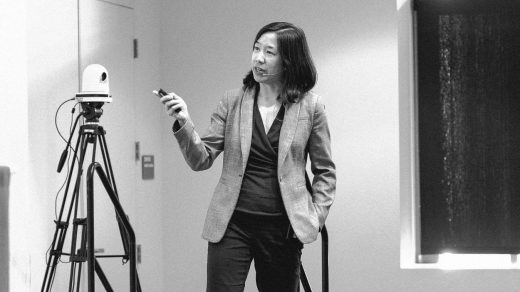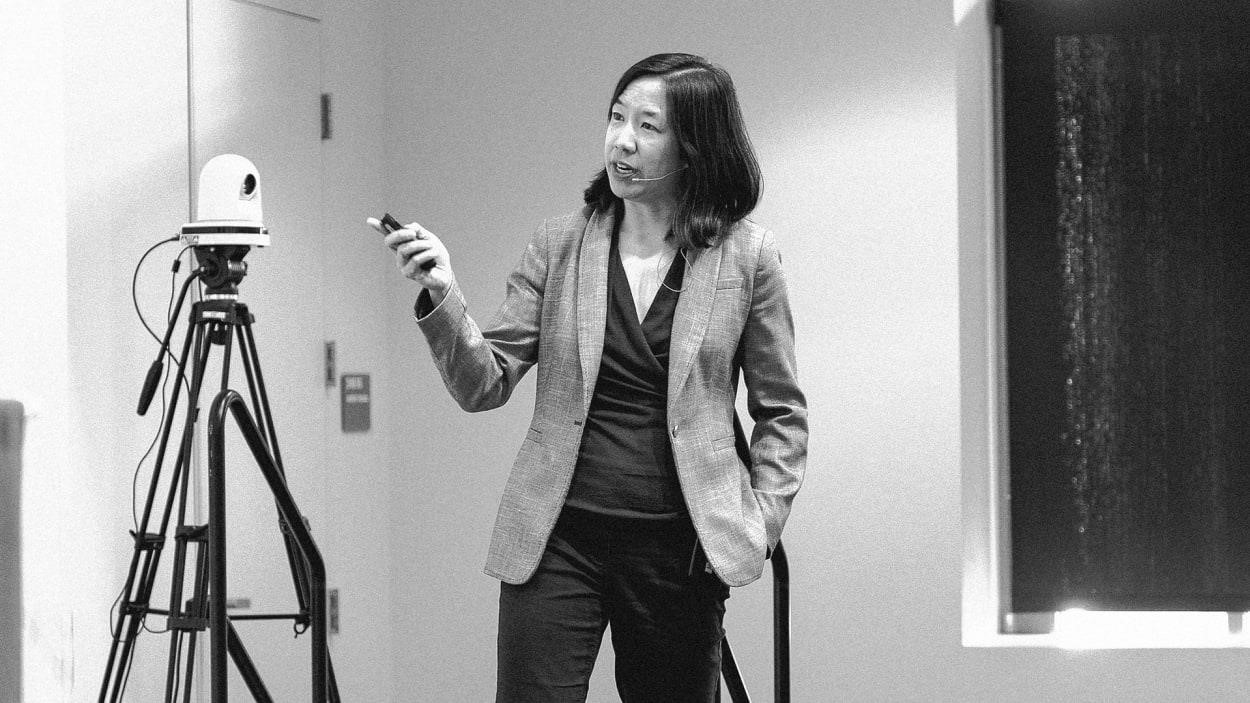This MacArthur genius helped us understand exactly how COVID-19 spreads
In the very early days of the COVID-19 pandemic, the messaging on how to stay safe centered on standing six feet apart and washing our hands. But Linsey Marr, an environmental engineer who had been researching how viruses spread through the air for a decade, knew that advice ignored a crucial component of transmission.
It wasn’t only fat, wet droplets that escaped someone’s mouth when they sneezed or coughed (they’re often heavy and fall to the ground within seconds). The virus was also exhaled out as thousands of tiny aerosols that stay floating in the air, and that can travel a great deal further than six feet.
When she first began looking at how flu viruses spread through the air in 2009, “there were not many people working on this question,” she says. “And the few of us who were felt like we had a fundamental, mechanistic understanding of how transmission was going on, how the virus was physically getting from one person to another, that the medical literature really lacked.”
Now, not only medical professionals but also the public are more aware of how certain viruses spread, and how masks can slow that transmission. That huge, collective education is thanks in part to Marr, who last week was named a MacArthur Fellow and awarded the colloquially-called “Genius Grant.”
Marr’s understanding of airborne transmission was, in some ways, against conventional wisdom when she first began working on it—it has been commonly thought that that the flu spreads via large droplets, but that understanding is changing from Marr’s work. Her research was also often interdisciplinary, which meant she and her colleagues had papers and proposals denied over the years because they didn’t easily fit into a specific discipline. There also wasn’t a lot of interest in the subject, and she felt like airborne transmission wasn’t being taken seriously as a topic.
And then the pandemic began. Marr was part of a group of 36 researchers from around the world led by Lidia Morawska, a Polish-Australian physicist, who were working on scientific papers to show evidence for airborne transmission, and what was needed to slow transmission during the pandemic.
Marr pivoted her own research group at Virginia Tech from the flu to SARS-CoV-2, testing masks and collecting samples from an isolation dormitory on campus. She worked on papers, spoke to government agencies and scientific organizations, and gave more than 500 interviews on how transmission works, and what people can do to protect themselves.
It was exhausting work; she spoke over and over again about how the aerosols move through the air, commenting on the safety of everything from outdoor dining sheds to how long you can wear an N95. She even touched on the importance of paying attention to indoor air quality after the pandemic, an issue that touches on the broader point of Marr’s years of work on how pollution, gases, and particles in the air (including viruses) are harmful to our health. “But I did it, and I was committed to doing it because I thought it was incredibly important, and because I knew we were starting from zero in terms of the general public’s knowledge and even the medical community’s knowledge about aerosols,” she says.
And it worked: The tide began to shift, health agencies including the World Health Organization updated their guidance to acknowledge airborne transmission, changing how they talk about the ways the virus spreads. “To get the news about the [MacArthur] fellowship felt like, wow, what I was doing was really worthwhile,” Marr says.
Even years before the pandemic, Marr knew her work on virus transmission was big, but she didn’t expect it to be relevant in this way, or so soon. “When I first started, I really recognized that there was a huge misunderstanding in our knowledge about transmission, and so I thought that what I was doing would be very important at some point,” she says. But she was wrong on a couple of counts, she admits: She thought it would be the flu, not a coronavirus. “And then I also thought it would be far off into the future, 30 years from now.”
Though the pandemic isn’t completely over, Marr is now able to pivot back to what she was working on before COVID-19 took over her work; she’s leading a big project on flu transmission. With the MacArthur Fellowship, which gives its “geniuses” $800,000 over five years, with no strings attached, Marr now has more funding and freedom to look for something new to study, though she’s not quite sure what yet. “We’re getting back into the flu, but at the same time, I’ve also seen a lot of people have now jumped into this field, and I’m the type of researcher who likes doing things in uncrowded fields,” she says. “So, I’m also thinking about new directions. I haven’t figured out what they are.”
(15)



